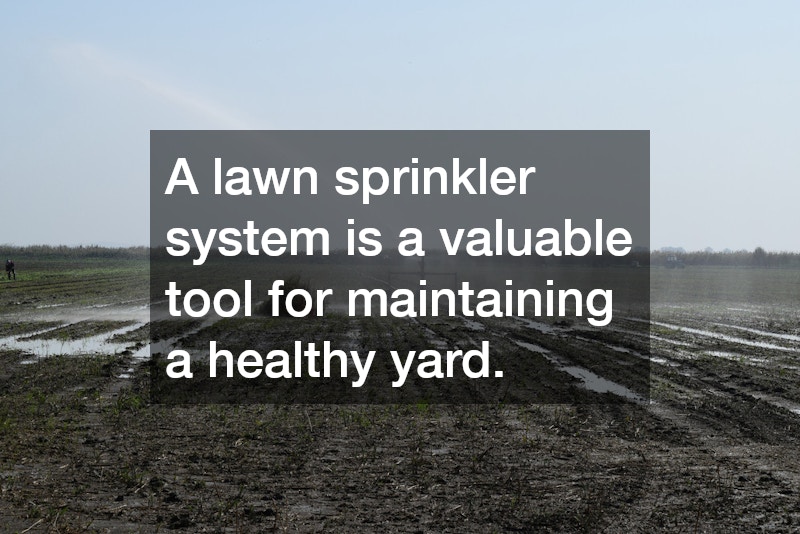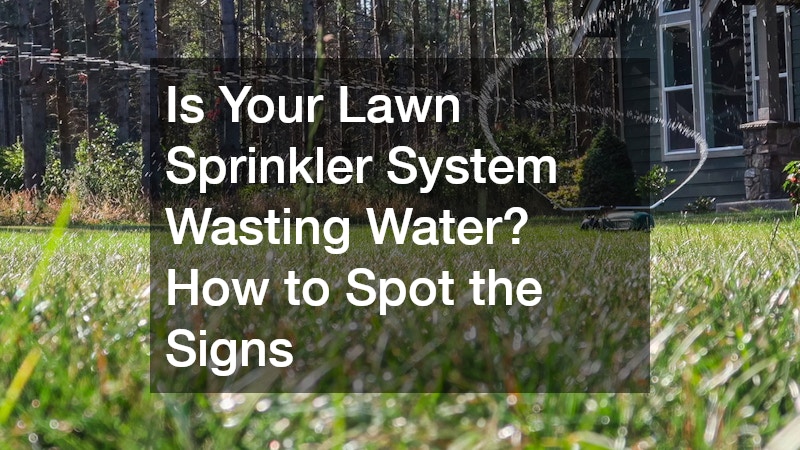Maintaining a healthy lawn requires consistent hydration, and many homeowners rely on an automatic lawn sprinkler system to do the job. But while these systems are designed to make yard care easier, they can also waste a surprising amount of water if they’re not functioning properly. In some cases, the signs of waste are obvious—like water spraying onto sidewalks—but more often, the problem is subtle and easy to overlook. Excess water usage doesn’t just drive up utility bills; it can also lead to lawn damage, soil erosion, and unnecessary strain on local water resources. Understanding the early warning signs can help you protect your landscape, avoid costly repairs, and ensure your system is working as efficiently as possible.
Below are key indicators that your sprinkler system may be wasting water—and what to watch for before small issues turn into bigger ones.
1. Overspray and Poor Coverage Patterns
One of the most common causes of water waste is overspray, which occurs when sprinkler heads distribute water beyond the areas that actually need it. If you regularly see water hitting driveways, sidewalks, fences, or your home’s exterior, it’s a clear sign that something is off. Misaligned spray heads, incorrect nozzle sizes, or improper system design can all lead to excess water usage.
Uneven coverage is another major issue. Areas that receive too much water may become soggy or patchy, while sections that receive too little will dry out. This imbalance often causes homeowners to increase watering times, which only wastes more water. Inspecting coverage patterns periodically ensures your irrigation targets the right places at the right rate. Adjusting the spray direction or replacing nozzles is often all it takes to restore balance.
2. Leaks and Dripping Around Sprinkler Heads
Leaks are a hidden but significant source of water waste. You might not see water pouring out, but even a small drip near the base of a sprinkler head can add up over the course of a season. These leaks often occur because of worn seals, cracked casings, or damage from lawn equipment. Underground leaks can be harder to spot but may reveal themselves through unusually wet soil, bubbling water during system operation, or growing water bills without increased usage.
If your system runs but certain zones never seem to reach the right moisture level, a leak underground may be diverting water away from its intended path. Addressing leaks early prevents excessive water loss and reduces the risk of damage to your lawn and surrounding structures. Regular inspections can help catch leaks before they become significant problems.
3. Water Pressure Issues
Your system depends on proper water pressure to deliver water efficiently. If the pressure is too high, sprinkler heads may mist instead of delivering a steady stream. This fine mist evaporates before it reaches the soil, meaning a large portion of the water is wasted. On the other hand, low pressure prevents your sprinklers from reaching the intended areas, causing dry spots and forcing the system to run longer to compensate.
Changes in pressure can result from issues like clogged lines, broken pipes, faulty valves, or municipal water fluctuations. If you notice misting, weak spray, or inconsistent performance across zones, it’s time to investigate your system’s pressure. Keeping the correct pressure ensures your lawn sprinkler system uses water effectively without wasting a drop.
4. Outdated Timers or Poor Scheduling
Even the most well-maintained sprinkler system can waste water if the schedule isn’t optimized. Many older systems rely on basic timers that water on fixed schedules, regardless of weather conditions. If your sprinklers run during or immediately after rainfall, you’re pouring water onto soil that doesn’t need it. Similarly, watering in the heat of midday leads to rapid evaporation, reducing efficiency and forcing the system to run longer.
Upgrading to a smart controller can dramatically reduce water waste. These modern devices adjust watering based on temperature, rainfall, soil moisture, and seasonal changes. But even without upgrading, reviewing your watering schedule can make a big impact. Early morning watering is generally the most efficient, reducing evaporation and allowing your lawn to absorb moisture before the heat of the day.
A lawn sprinkler system is a valuable tool for maintaining a healthy yard, but it can also quietly waste water if it’s not regularly monitored. Overspray, leaks, pressure issues, and outdated scheduling habits are all signs that your system could be using more water than necessary. By paying attention to how your sprinklers perform and making timely adjustments, you can protect your lawn, reduce waste, and keep your water bills under control.
Regular inspections and small corrections go a long way toward improving efficiency. Whether you handle maintenance yourself or rely on a professional, staying aware of these signs ensures your system delivers the right amount of water exactly where it’s needed—no more, no less.

